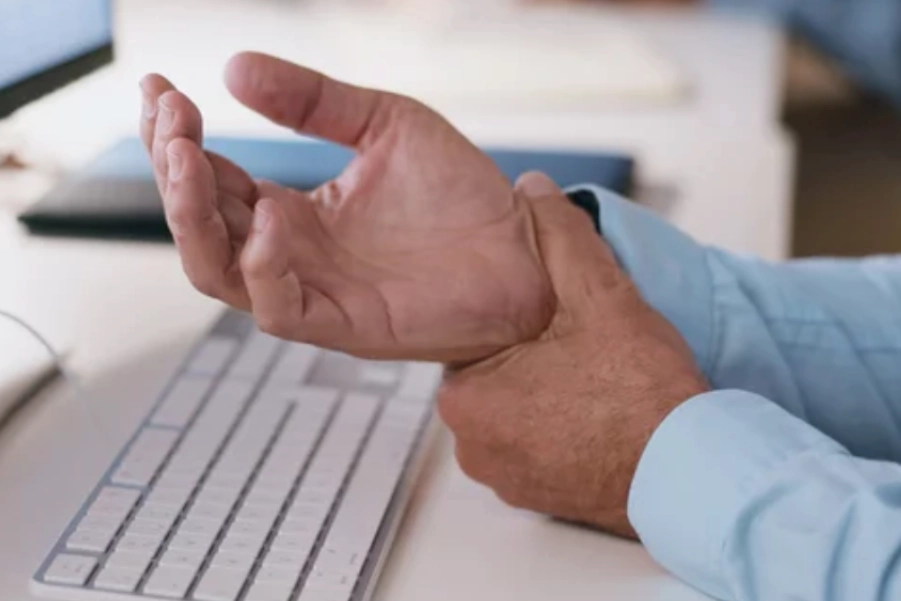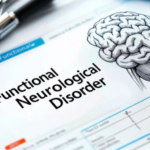Physiotherapy Treatment Protocol for Mild Carpal Tunnel Syndrome (CTS)
Overview of Conditions:
Carpal Tunnel Syndrome (CTS) is a condition caused by the compression of the median nerve within the carpal tunnel at the wrist. The carpal tunnel, a narrow passageway formed by bones and ligaments, allows the median nerve and tendons to pass through. In CTS, inflammation of the tendons or thickening of the ligament compresses the median nerve, leading to symptoms such as numbness, tingling, pain, and weakness in the hand and wrist. Mild CTS presents with intermittent symptoms such as occasional tingling or numbness in the thumb, index, and middle fingers, often triggered by activities like typing or gripping, and may resolve with conservative management.
Assessment and Evaluation:
History:
- Onset: Gradual onset, commonly associated with repetitive wrist movements such as typing or hand tool use.
- Pain Characteristics: Tingling, numbness, or pain in the median nerve distribution (thumb, index, middle fingers), typically worsened by repetitive activities.
- Night Pain: Often reported, relieved by shaking or moving the wrist.
- Activity History: Activities involving wrist flexion or extension may aggravate symptoms.
- Previous Medical History: Conditions like diabetes, hypothyroidism, or obesity may predispose individuals to CTS.
Physical Examination:
- Inspection: Generally no visible deformities in mild cases, but severe cases may show muscle wasting in the thenar eminence.
- Palpation: Check for tenderness at the carpal tunnel and any swelling.
- Special Tests:
- Phalen’s Test: Flex wrist for 60 seconds to provoke symptoms.
- Tinel’s Sign: Tap over the median nerve at the carpal tunnel.
- Durkan’s Test: Apply pressure over the carpal tunnel to reproduce symptoms.
Imaging:
- X-rays: To rule out fractures or other abnormalities; not typically necessary for mild CTS.
- Electromyography (EMG) and Nerve Conduction Studies: Used in moderate to severe CTS but not typically required in mild cases.
Goal Setting:
Short-Term Goals (0-4 weeks):
- Pain Relief: Achieve a VAS (Visual Analog Scale) score of ≤ 3 for symptoms like tingling and numbness.
- Improve Function: Restore hand function for basic tasks like gripping, holding, and typing.
- Wrist Positioning: Educate on neutral wrist positioning during activities and sleep.
- Activity Modification: Recommend strategies to reduce exacerbating activities (e.g., prolonged typing or using a mouse).
Long-Term Goals (4-12 weeks):
- Strengthening: Increase strength in the hand and wrist, especially in intrinsic hand muscles (e.g., thenar muscles).
- Symptom Resolution: Complete or significant symptom reduction, with no recurrence of tingling or numbness during typical activities.
- Return to Normal Function: Achieve pain-free use of the hand for work and daily activities without restrictions.
Recommended Treatment:
Electrotherapy:
- TENS (Transcutaneous Electrical Nerve Stimulation):
- Indication: To alleviate pain and symptoms of CTS.
- Parameters:
- Frequency: 80-100 Hz
- Pulse Duration: 150-250 µs
- Duration: 20-30 minutes, 1-2 times per day
- Mechanism: Stimulates large sensory fibers to block pain transmission, providing relief.
- Interferential Current Therapy (IFT):
- Indication: To reduce pain and inflammation, providing deeper tissue penetration.
- Parameters:
- Frequency: 4,000 Hz modulated at 80-150 Hz
- Duration: 15-20 minutes per session
- Mechanism: Stimulates deeper tissues, improving circulation and reducing muscle spasms.
Thermotherapy:
- Moist Heat Packs:
- Indication: To relax muscles and reduce pain in the wrist and forearm.
- Application: Apply moist heat packs for 15-20 minutes, 1-2 times per day.
- Mechanism: Increases blood flow, reduces muscle tension, and promotes healing.
Manual Therapy:
- Myofascial Release:
- Indication: To reduce muscle tension around the wrist and forearm.
- Technique: Gentle stretching and myofascial release applied to wrist flexors, extensors, and forearm muscles.
- Duration: 10-15 minutes, 2-3 times per week.
- Mechanism: Targets tight fascia and trigger points, improving mobility and blood flow.
Exercise Therapy:
- Wrist Flexor and Extensor Stretches:
- Indication: To improve wrist muscle flexibility and reduce median nerve compression.
- Exercise: Gentle wrist flexor and extensor stretches, holding for 15-30 seconds.
- Repetitions: 3-5 times, 2-3 times per day.
- Mechanism: Relieves pressure on the median nerve and restores normal movement.
- Strengthening Exercises:
- Indication: To strengthen wrist, forearm, and hand muscles for improved stability.
- Exercise: Isometric wrist flexion/extension exercises and grip strengthening using a rubber ball or putty.
- Repetitions: 2-3 sets of 10-15 reps, 3-4 times per week.
- Mechanism: Stabilizes the wrist and prevents further nerve compression.
- Nerve Gliding Exercises:
- Indication: To improve nerve mobility and reduce median nerve tension.
- Exercise: Perform nerve gliding exercises with the wrist in a neutral position.
- Repetitions: 5-10 reps, 2-3 times per day.
- Mechanism: Promotes free movement of the median nerve within the carpal tunnel, reducing compression.
Precautions:
- Avoid Prolonged Static Positions: Avoid wrist flexion/extension positions that can exacerbate symptoms.
- Monitor Symptoms: If symptoms worsen (e.g., increased tingling), stop activities causing further compression and consider using a wrist splint.
- Caution with Strengthening: Exercises should not cause pain; reduce intensity if pain increases and consult a physiotherapist for modifications.
Reassessment and Criteria for Progression/Change in Care Plan:
- Pain Levels: Progress when VAS ≤ 3 during normal activities.
- ROM and Strength: Aim for 90-100% of normal wrist function.
- Functional Improvements: Increase intensity and complexity of exercises if grip strength improves and pain reduces.
- Return to Normal Activity: Consider reducing physiotherapy sessions and transitioning to a home exercise program once symptoms resolve.
Disclaimer and Note: Treatment options should be chosen wisely and appropriately. For example, where multiple options are recommended, any one option can be selected based on availability and appropriateness, such as in electrotherapy. Always consult a qualified healthcare provider before starting any physiotherapy treatments. The content provided is for informational purposes only.
References:
- Zhang, X., et al. (2022). “Physiotherapy interventions for mild carpal tunnel syndrome: A systematic review.” Journal of Orthopaedic & Sports Physical Therapy, 52(7), 497-507.
- Beliveau, M., et al. (2023). “The effectiveness of physical therapy in the management of carpal tunnel syndrome: A review of the literature.” Journal of Hand Therapy, 36(1), 12-23.
- Sadeghi, N., et al. (2021). “A comparison of manual therapy versus electrotherapy for treating carpal tunnel syndrome: A meta-analysis.” Musculoskeletal Science and Practice, 51, 102309. \






